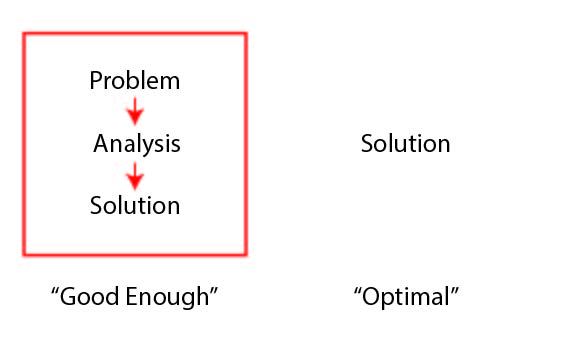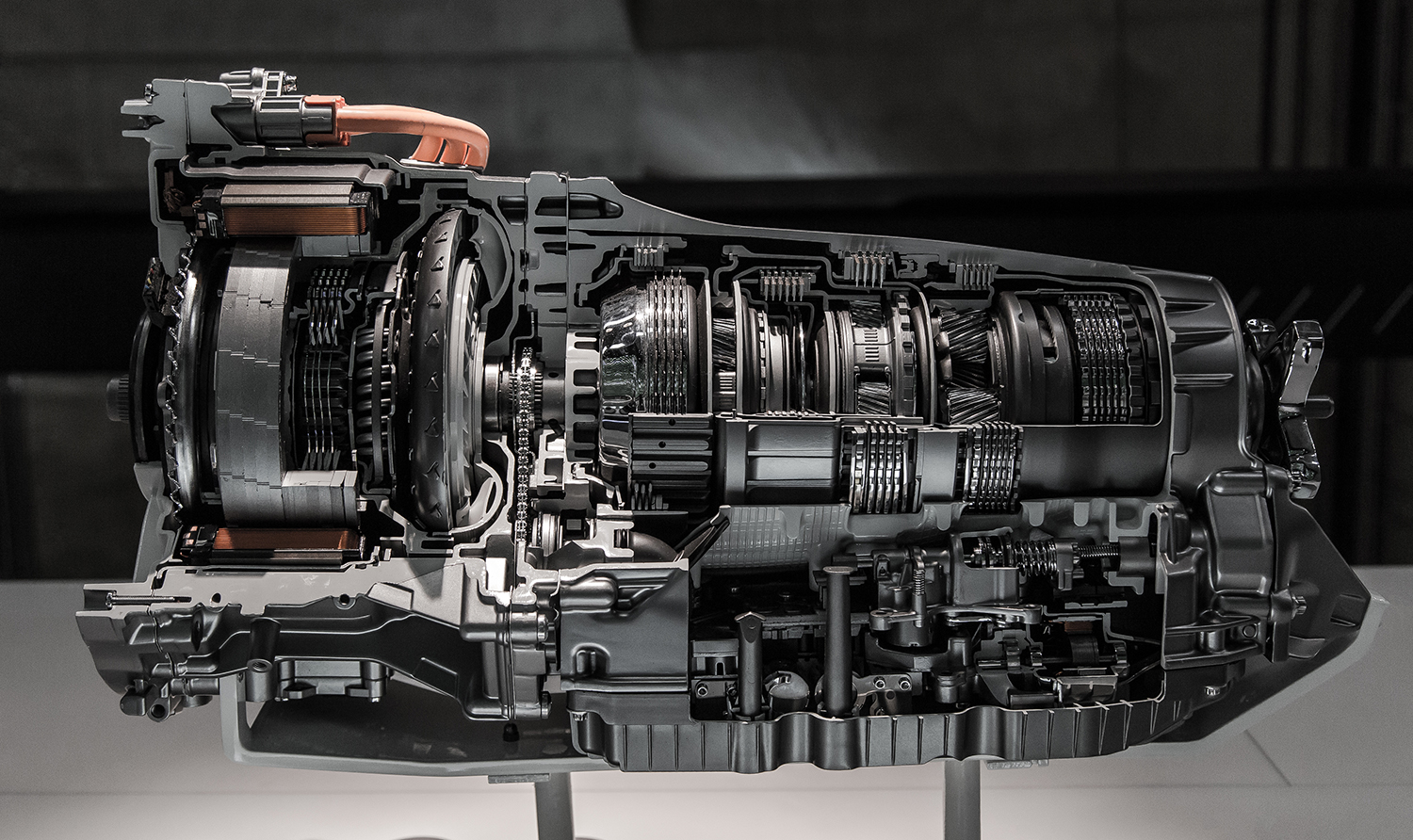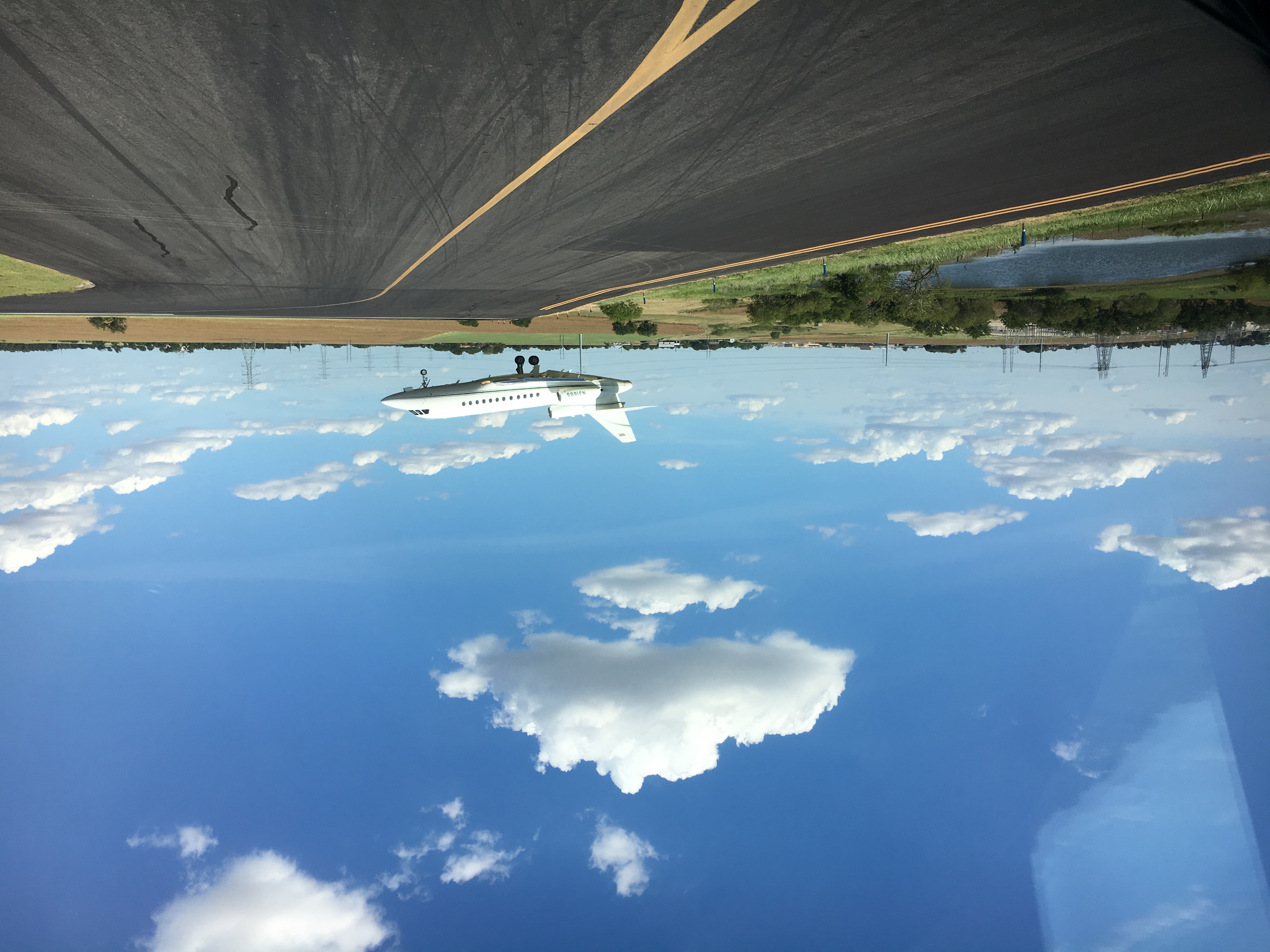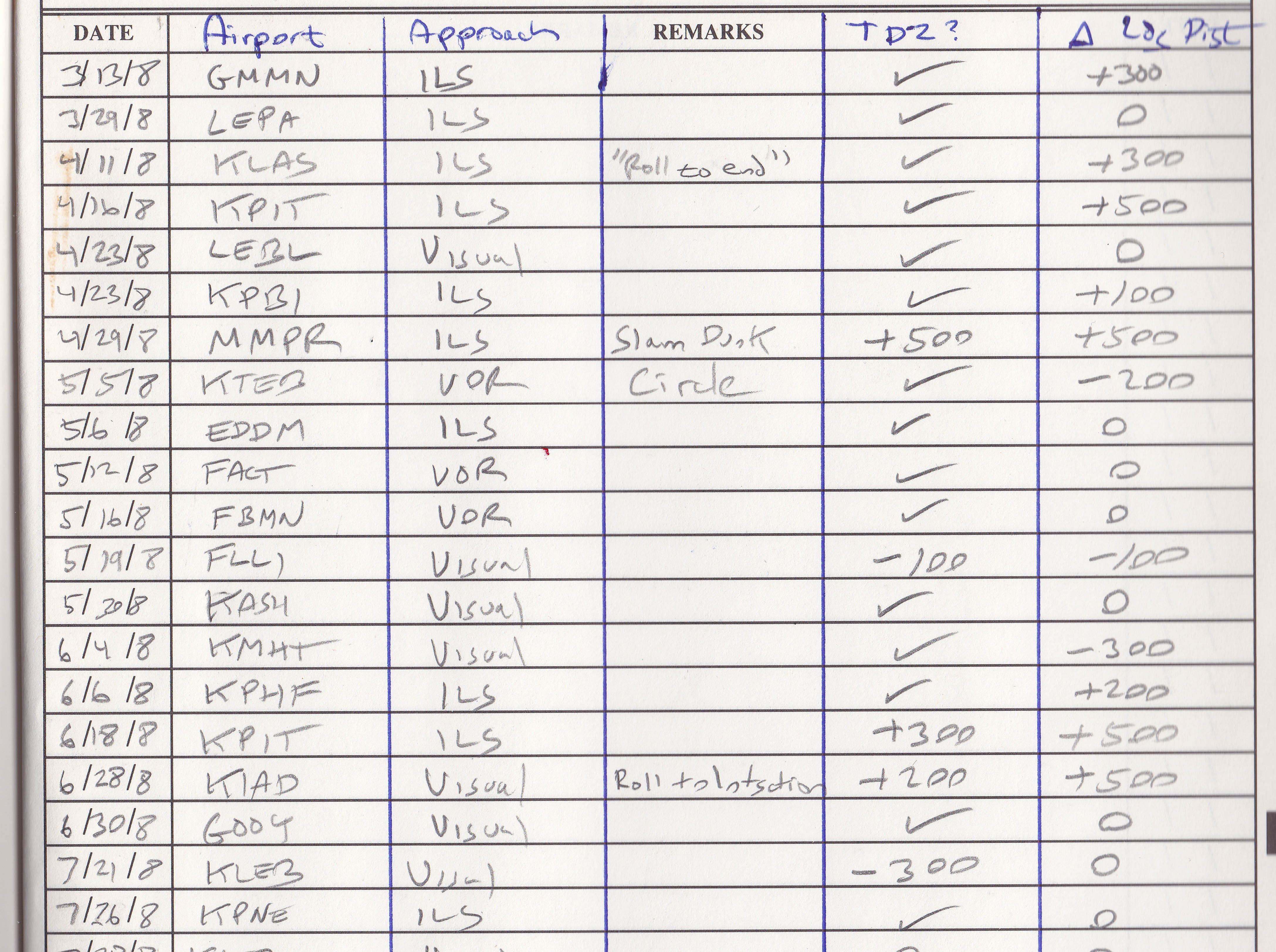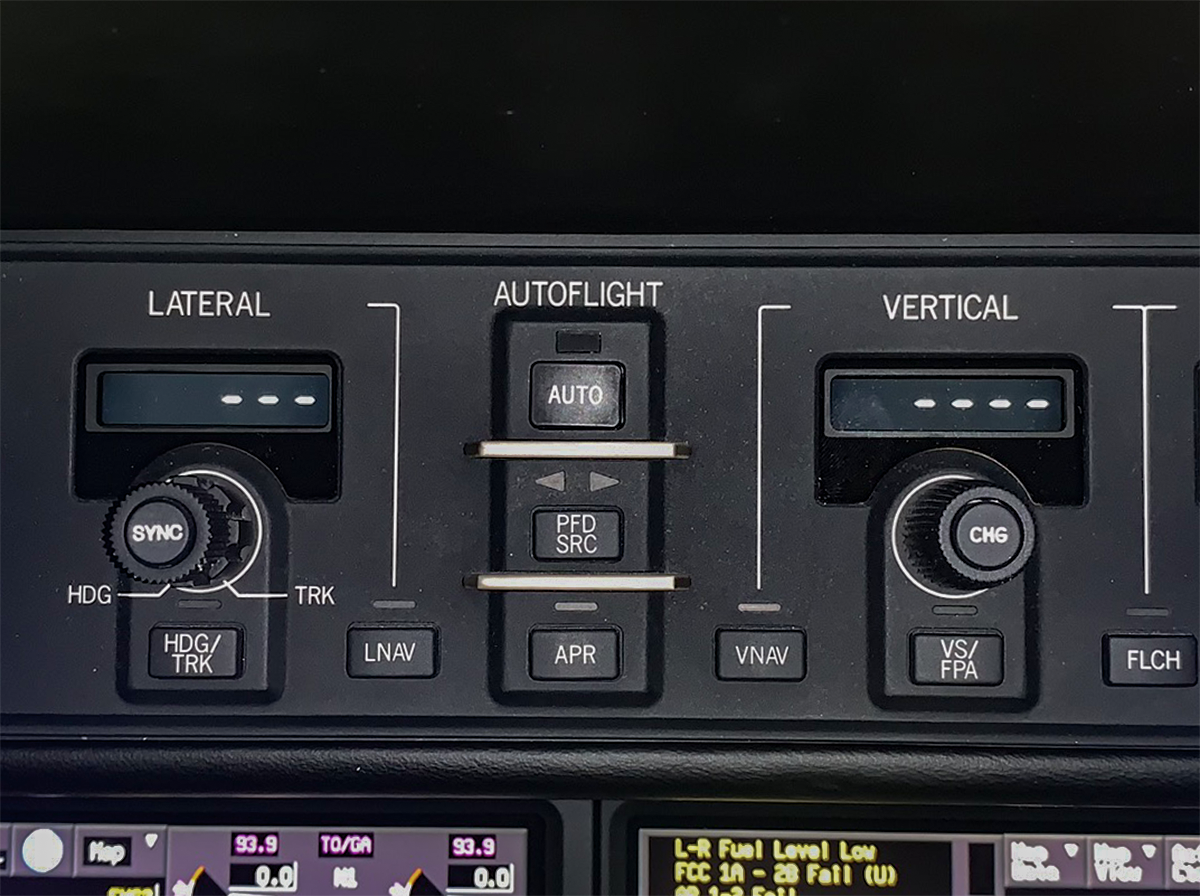At heart, everyone involved with aviation is – or should be – interested in solving problems. If propelling wingless humans through the heavens isn’t a problem, after all, what else could be? By virtue of the need to conquer all problems quickly, we aviators tend to be aviation engineers. We want to solve the problem most directly in front of us, so we can move on to face the problem sure to come afterwards. As a longtime pilot and engineer, all of this seems perfectly normal to me. If you have a problem and manage to solve it on your first try, why go any further? If the solution is good enough, isn’t any further effort a waste of your time?
— James Albright

Updated:
2022-09-01
But what if we aviators and/or engineers have been doing this all wrong? This is more than an academic discussion. Learning how to solve problems by looking at the desired solution before addressing the problems might make you a better aviator. I think this technique has helped me greatly over the years.
When I say “technique,” I am probably giving myself too much credit. I’ll discuss two techniques for operating aircraft more efficiently and safely that took me years to develop, but knowing what I know now, I think I could have solved each problem more quickly, had I learned to prioritize the solution and not the problem. I learned how to speed this process along by listening to a computer engineer with no background in aviation whatsoever.
James B. Keller is a microprocessor engineer best known for his work at Apple, Digital, Intel, and Tesla. Besides designing many of the microprocessors you might have used in personal computers, he also had a hand in the Tesla automotive autopilot. In short, he is good at coming up with solutions dealing with hardware and software. Keller describes the problem-solving methodology at Tesla as “Solution first. If I don’t like your solution, I don’t care about the problem.” Keller explained that when we dive deep into a problem, we get to understand the problem intimately and that narrows our focus when the solution might be well outside that focus. We aviators are often guilty of that, but perhaps an example from the automotive industry will serve us well to illustrate that.
2 — Case study: the psychological urge to duck under
3 — Case study: automation proficiency versus “hand-flying” proficiency
4 — New Idea: the situational awareness briefing
5 — Engineers and pilots love problem solving more than solutions

1
Shifting gears
Like many pilots, my first obsession before fast aircraft was fast automobiles, preferably with a large eight-cylinder engine, a “four on the floor” transmission, and a clutch. It was the clutch that separated the real gear heads from other, shall we say, pedestrian drivers. Why was the transmission needed? The answer to that question illustrates typical engineering problem solving. At the heart of the problem is the internal combustion engine, which has a minimum speed that is well above zero, provides high torque at low speeds and high speeds at low torque. Boiled down, the two major problems are (1) that the engine cannot propel the car from a standing start without a massive jolt, and (2) that the top speed of the engine will not allow higher speeds. Solution part one: a clutch to disconnect the engine from the wheels so the engine can idle at some minimum speed and then be smoothly (with enough skill from the operator) connected to allow the initial movement. Solution part two: a transmission which changes the ratio of revolutions per minute from the engine to the wheels to provide high torque at low speeds and still provide higher speeds when the torque isn’t needed. The engineer in me loves all of this: job done.
But there are lots of problems generated by the clutch and transmission solution. Operating the clutch takes practice and having to use the clutch for each change of gears results in a jerky acceleration. Solution: an automatic transmission that eliminates the clutch and makes all those pesky gear changes for you. Because the gear changes are fast, the acceleration is less jerky and at lower rates of acceleration, can be perceived as smooth enough.
Over the years, automatic transmissions have become so good, they easily outperform manual transmissions, but they do have at least three major issues. First, they are incredibly complicated and expensive to repair. Second, they add weight to the vehicle. Third, they are inefficient. An automatic transmission outputs less power than inputted, lowers fuel economy, and does offer a small pause for each gear change. Despite all this, the automatic transmission is the solution of choice for most vehicles today.
Now let’s look at the problem the other way around. What is the desired solution, irrespective of the existing problems found in conventional vehicles with a reciprocating engine? What is the desired solution? It is this: we want to be able to accelerate from a standing start to our top speed smoothly, quickly, and efficiently. The answer turns out to be a vehicle propelled by an electric motor.
To illustrate the sea change represented by an electric vehicle, let’s consider an “entry level” 2020 Tesla Model 3 compared to a sports hatchback designed to impress with retina-detaching G-forces from a standing start: the 2020 Honda Civic Type-R. My son owns such a monster, equipped with a 2.0 liter, turbo charged engine, 6-speed short-throw transmission, and a high performance clutch. With the right driver behind the wheel, it will accelerate from 0 to 60 mph in about seven seconds. To get this performance, the driver manipulates three pedals (brake, clutch, accelerator) and a gear shift. You feel like you are going the speed of sound because there is so much noise and vibration to be had. The genteel Tesla Model 3, by comparison, has two pedals: a brake and an accelerator. To go from 0 to 60 mph you press the accelerator pedal and five seconds later you will be surprised by your speed because the acceleration was smooth and the noise level was almost nil.
The solution-first answer completely bypassed our first attempts at addressing the problems as we saw them. Can we apply this method to aviation? Here are two personal examples.
2
Case study: the psychological urge to duck under
Consider, for example, the classic “duck under.” Most aircraft are designed to fly a 3-degree glide path during an approach to landing. Going below that glide path greatly complicates the landing, risks hitting something short of the runway, makes the aircraft susceptible to wind gusts, and robs us pilots of considerable style points. Ducking under is bad, but we do it because we want to stop the aircraft before we run out of runway, which would be good.
We never attempt to land unless our books tell us we have enough runway. The engineer in me appreciates all those spaghetti charts, graphs, and tables found in aircraft performance manuals. I understand intuitively that landing my aircraft in the touchdown zone of a runway and using Airplane Flight Manual (AFM) procedures will allow me to stop within the confines of the runway plus a margin for error. I know that. And yet, for years, I’ve had an inner voice telling me I need to improve my odds by ducking under the glide path so I can land before the touchdown zone. I’ve read enough accident case studies to know that ducking under is a recipe for disaster, and yet when faced with a short runway, I was tempted. Moreover, I often gave into the urge.
An Air Force squadron mate of mine landed our Boeing 747 at Andrews Air Force Base one day and ended up putting all eighteen wheels deep into the displaced threshold, forcing us to realize that our technique of aiming short and flaring to the runway was not only a high-risk maneuver but that it was entirely unnecessary. We started requiring that the aircraft be flown no lower than any published glide paths and if none were published, we had to compute minimum altitudes based on 300 feet of height above the runway for every 1 nautical mile from the touchdown zone. This worked for about a month, after which most of our pilots reverted back to the way we had always done it. The temptation to duck under was just too great.
After I left the world of super jumbos and started flying Gulfstream business jets, I didn’t give the duck under much thought until 2007 when a pair of highly experienced pilots landed their brand-new Global 5000 at Fox Harbour Airport, Nova Scotia, Canada. The pilots were aiming for a point 500 feet down the runway, failing to realize their wheels would touch hundreds of feet short of where they were aiming. The wheels ended up about 8 feet short, sheared off, and the aircraft was destroyed as a result. (See “Countering Complacency,” Business & Commercial Aviation magazine, October 2014, for an in depth analysis.) I then started to worry about the duck under again and realized I still felt the need to aim short.
I attacked the problem with renewed vigor by applying high level math to the landing geometry problem and preaching to all who would listen the fact that their aircraft’s landing gear will contact the runway hundreds of feet short of the aimpoint without a flare and that the flare cannot be relied upon. (See: The Landing Flare.) . I counseled others, and myself, to precompute altitude-distance checkpoints. My solution was math-based and therefore, I thought, beyond questioning. I managed to practice what I preached until the next time I was faced with a 5,000-foot runway. I realized then that my “good enough” solution wasn’t good enough because it solved the wrong problem. The problem wasn’t that I wasn’t able to maintain a proper glide path, it was that I didn’t want to. The problem was that I didn’t trust myself to fly the aircraft in a way to achieve AFM landing performance distances.
My desired solution was to have faith in the numbers and my ability to achieve those numbers. How? I started a log of my landings to note how well I maintained glidepath, my speed control, my touchdown point, the smoothness of the deceleration, and how much runway I needed to get to taxi speed. After two months I noted with satisfaction that I managed to fly on glidepath and on speed for every landing. My touchdown point was perfect and the deceleration was always smooth. But the biggest surprise was I always used less runway than predicted. That, of course, was due to the use of thrust reversers, but it taught me that I could achieve AFM numbers without ducking under.
That was about fifteen years ago. Last year I was flying an aircraft I had no experience with and a seasoned instructor in the right seat. After establishing myself on glidepath he suggested I duck under so we could make the first available taxiway. I told him, “I don’t do that.” He dropped the subject. I landed in the touchdown zone and still managed to make the first taxiway. Even when that old “inner voice” turns into an actual voice, I no longer have the desire to duck under. The solution was to believe the AFM numbers. I taught myself to believe.
3
Case study: automation proficiency versus “hand-flying” proficiency
We hear this every few years, especially after some accidents blamed on inexperienced pilots: we need more hand-flying practice! The best recent example with tragic results was the 2009 crash of an Air France Airbus A330 over the Atlantic, when a relatively inexperienced first officer stalled the aircraft at 35,000 feet. Ice crystals had removed all airspeed indications for about 20 seconds, causing the autopilot to disengage. The first officer instinctively pulled the pitch back to about 7 degrees above the horizon, 5 degrees higher than needed to maintain level flight and speed. The captain was in back during an authorized rest break while another first officer occupied the captain’s seat. Much has been made about the two first officers fighting against each other without knowing it; one was pulling the stick aft, the other pushing it forward. But the result was the airplane hitting the ocean at over 10,000 feet per minute, killing all 240 on board. It was clear that the inexperienced first officers didn’t understand the aircraft could not maintain speed with a pitch of 7 degrees above the horizon at high altitude.
More about this incident: Air France 447.
We also see accidents where pilots either made a mistake when setting up their avionics for an instrument approach or failed to catch a problem with the avionics or the approach being used. We pilots have become so reliant on automation, it is said, that we trust what the computers are doing without paying enough attention to ensure the aircraft is flown as we desire.
The problem, as most analysts saw it, was that pilots of highly automated aircraft don’t get enough actual hand-flying experience outside of the simulator. That leads us to an obvious solution: hand-fly more often and in all phases of flight. Once again, I am not so sure about this.
My first experience with flying passengers was in an Air Force KC-135A tanker that had a rudimentary autopilot which could do little more than maintain an altitude and course. We were required to hand-fly up to cruise altitude as well as any visual or instrument approach. Large aircraft are more sensitive at high altitudes, can tend to “mush” about, and require the pilot to think well ahead for each maneuver. But since we did this for every flight, it became second nature. These days hand-flying at many altitudes violates Reduced Vertical Separation Minima rules and the idea of having a young, inexperienced pilot practicing his or her skills with unseated passengers in back strains the bounds of common sense. So, hand-flying at altitude may not be the right answer. What about during an instrument approach?
We professional pilots are normally required to demonstrate the ability to hand-fly an instrument approach down to our lowest authorized minimums for each instrument check ride and that seems to work out just fine, albeit in a simulator. In the aircraft, I normally couple the autopilot when flying an instrument approach in instrument conditions. But even with the autopilot coupled, I occasionally find things aren’t going as they should. My number one transgression of late is failing to select the final notch of flaps while on glideslope, as required for my aircraft. Second on the hit list is failing to adjust airspeed to updated runway winds. In the last year, I was twice flagged by our aircraft’s Flight Operations Quality Assurance module for having an outdated altimeter setting. Other than that, I’ve been perfect!
As the pilot monitoring, I’ve noticed the same tendencies and more from the pilot flying; again, all of this with the autopilot engaged. So, will more hand-flying solve what ails us? I’m not so sure. Over the years I’ve noticed these same tendencies while hand-flying, with greater frequency. One of the biggest differences between our performance in the simulator (nearly perfect) and the aircraft (less than perfect) is the ever-present distraction of the outside world. Almost all our speed issues came after an Air Traffic Control (ATC) instruction to keep our speed up or requiring we stay higher than usual to accommodate other traffic. The speed or high descent rates forced us to delay extending that last notch of flaps to the point we almost forgot to finish the last step of the before landing checklist. Another frequent cause of missing procedures was being concerned with weather avoidance or crosswind limitations.
Throughout all our instrument approaches, the ability to hand-fly was never a factor. I have flown aircraft that were so unstable, it took a deft hand at the controls to keep the aircraft on course and glideslope. But that hasn’t been the case for me in several decades. The aircraft I’ve flown have become easier to fly even as the avionics have become more complex. If the problem is making mistakes with the automation, hand-flying isn’t the answer. It is time to think outside the problem-solution box.
I don’t think more hand-flying would have solved any of these problems because it fails to address what happened along the way to our mistakes. We pilots do not monitor well. We don’t monitor the other pilot well. We don’t monitor ourselves well. We don’t monitor the automation well. If we could learn how to monitor, our automated-flying and hand-flying will improve.
Looking at the desired outcome and not the problem, we can think of the needed solution to be having pilots who are able to monitor automation, the other pilot, and themselves with greater accuracy. I recognize that we all have our individual strengths and weaknesses, and what works for me might not work for you. But it might, so consider my solution: treat every task as if you are administering a check ride. Learn to look for mistakes and to correct them as they are made.
In the case of our inexperienced first officers at 35,000 feet without airspeed indicators, the check airman in me would have intervened with, “what is the right pitch setting at 35,000 feet with cruise power?” If it was me flying and I didn’t know the answer, the first impulse would be to do nothing, leave the pitch and thrust alone. Their airspeed indication came back after 20 seconds. Doing nothing for 20 seconds can be hard for pilots used to doing something, anything. But it is often the right answer. Now let’s say it was the autopilot that pitched up to 7-degrees and not the pilot. The answer remains the same, evaluate the correct pitch setting and if the autopilot isn’t flying the correct setting, intervene.
The example of forgetting the last notch of flaps prior to landing is a common one for many aircraft types. For these aircraft, you cannot extend the final flap increment until the gear is down, you cannot extend the gear until close to the glide path, so it is easy to forget if there are any distractions or environmental factors forcing the delay. I’ve flown many instrument approaches from the jump seat while giving check rides where I forced myself to think one or two steps ahead of the aircraft so I could catch any errors from the two pilots up front.
“Next up is the gear before the glideslope,” I would remind myself as soon as the glide slope needle moved. “Next up is the flaps.” “Next up is the correct speed,” and so on. I do the same thing when I’m at the controls, even on a coupled approach. In my aircraft, a Gulfstream GVII, the airspeed bug is automatic and once the last notch of flaps are down, the speed should decelerate to a computed reference speed plus a computed wind adjustment. If that doesn’t happen, someone or something made a mistake. I’m looking for that mistake as soon as the flaps are down.
4
New Idea: the situational awareness briefing
Picture this . . .
You are momentarily solo in the cockpit after the captain went aft to take care of a physiological need. In that time, you get a frequency change, and a few other things from air traffic control. Then they say you have heavy traffic at 12 o'clock just a thousand feet above you. You are concerned about wake turbulence and set out to look for the head on traffic. Just then the captain returns, checks in on interphone. "Heavy traffic, a thousand above us, twelve o'clock, I don't see him." The captain helps you look and you both see him a few seconds later. The contrails off the heavy and clearly blown to one side and you breathe a sigh of relief. The captain tells you about a passenger request for ground transportation and you set about figuring that out. Pretty normal stuff in the day of a business jet pilot.
"I'm back, by the way," the captain says, as required by your Standard Operating Procedures. You both laugh and you say, "no changes, by the way."
About five minutes later center calls, "Are you guys going to be able to make that descent restriction? We need you at Albany at Flight Level two zero zero."
Just then you remember that you were given a pilot discretion descent with a restriction to cross the next waypoint. The descent gradient will be beyond your aircraft's capability. You beg forgiveness and receive a delay vector to help.
I've been there a few times, I am afraid to say. Our SOP requires a situational awareness briefing to a pilot returning to the cockpit. But more times than not the entire briefing consists of, "no changes."
The traditional fix is to remind yourself to do better next time. You might even come up with a printed checklist that will work once and then be forgotten.
Now let's try something new . . .
What is the desired solution? We want to give the other pilot a complete briefing of the aircraft's situation in terms of the usual aircraft's status, its position, and any communications requirements. We want to be able to remember to cover any changes to those three items.
We all know the phrase: "Aviate, navigate, communicate" as the three essential items of flying airplanes. I think if you train yourself to mention all three every time, you will be less likely to forget when something needs to be mentioned. In our hypothetical situation: "Aviate: we are still at Flight Level four one zero with the autopilot engaged, but center wants us to descent to flight level two zero zero by Albany. Navigate: we are still on LNAV, flight plan route to Albany. Communicate: we are still talking to New York, but it is a new frequency."
In another scenario with nothing changed: "Aviate: autopilot still engaged holding us at Flight Level four one zero. Navigate: we are till LNAV on flight plan course, next point is Jamestown. Communicate: still talking to Cleveland Center with a data link log on."
Do this every time and you are less likely to forget a pending clearance.
5
Engineers and pilots love problem solving more than solutions
We pilots share something in common with engineers: we want to solve our problems with minimum effort and as soon as we find a solution that works, we give ourselves a pat on the back and move on. If the problem is solved, we ask ourselves, why waste any more time on it? The solution may indeed be right, but maybe it is just putting a band-aid on something more seriously wrong. A better way might be to throw out our current procedures and to think about what an ideal solution would be. It could be that the problem as we previously framed it disappears entirely. Aviation is a ripe field for this kind of thinking. Just think back to your early career. There is no doubt a constant speed prop solves many of the problems of a fixed-pitch propeller. But isn’t a jet engine much better? The next time you are struggling with a complicated problem, you might think about starting with the solution before analyzing the problem.
